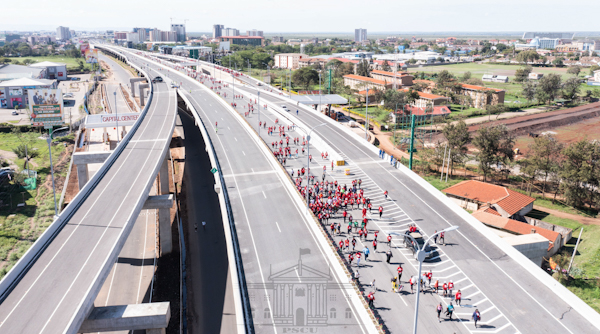Thrombosis, more commonly known as blood clotting, is a dangerous and life-threatening condition. Globally, one in four people dies from conditions caused by thrombosis, making it a leading cause of death worldwide.
Concerningly, with technological advances and shifting work patterns, many of us lead increasingly sedentary lifestyles, increasing our risk of thrombosis. Do you sit at a desk for work or enjoy sitting and watching TV in the evening? You could be at high risk.
This is because when we sit for long periods of time, it enables the pooling of blood in the veins, leading to clot formation, known as deep vein thrombosis (DVT). These clots can then break off and travel to other parts of the body, causing harmful effects. For example, if a clot travels to the lungs it leads to a potentially deadly condition called pulmonary embolism (PE).
In light of this risk, World Thrombosis Day’s (WTD) theme this year is “Move Against Thrombosis”. WTD aims to raise awareness about the risks of thrombosis and encourage and empower people to take preventative action against it.

Signs you’re not moving enough
So how can you know if you are not moving enough and subsequently are at risk of thrombosis?
Globally, one in four adults does not meet recommended levels of physical activity. The goal of 10,000 steps is widely circulated, but even taking 7,000 steps a day can have a statistically significant positive impact on health, says Dr Helen Okoye, a leading thrombosis specialist who is part of the WTD campaign steering committee. If you’re moving less than this, it is important to walk more! Steps can be tracked and monitored on most smartphones and watches.
But crucially, even when living a generally active life, time spent sedentary poses a risk to health. WHO states that we should limit the amount of time spent being sedentary. Replacing sedentary time with physical activity of any intensity (including light intensity) provides health benefits.
To monitor this, sitting down for too long has physical effects on the body that can also be used as tell-tale signals to move more. If you frequently sit in front of a screen, you may experience symptoms such as difficulty sleeping, low energy, poor posture, weight gain, lack of focus, constipation, tight hips and hamstrings, stiff neck and shoulders, and back pain.
If you’re experiencing any of these symptoms, it is vital to take action to increase your movement.
Reducing your risk of thrombosis does not require a drastic life overhaul; a few simple changes can increase your chances of a healthy life.
Five ways to move more
Here are five easy ways to break up your time sitting still. Get your friends involved and try to make one or all of these a regular habit in your day-to-day life.
First, take intentional breaks throughout your day, as recommended by Dr. Okoye. Whether it’s stepping outside for a few minutes, engaging in a conversation with a colleague, or going for a short walk to grab a snack or coffee, these moments of movement significantly reduce the risk of thrombosis. It’s important to recognize that it’s the cumulative effect of these small movements that truly matters. The key is to integrate movement into every aspect of your life.
Secondly, prioritize walking more. There are numerous ways to increase the amount you walk and achieve the goal of 7,000 steps per day. Consider switching to walking meetings and phone calls, opting for the stairs instead of elevators, parking a bit farther away from your destination, and scheduling a dedicated 15 to 30-minute walk each day.
Additionally, incorporate more stretching into your routine. Take advantage of standing breaks or leisure time and engage in exercises or stretches. Even dedicating a short period of time to exercise or stretching can have a positive impact on your overall health. You can find brief yoga or stretching videos on platforms like YouTube, which effectively help release stress and relieve muscle tension. Alternatively, challenge yourself to perform simple exercises, such as five lunges every hour.
For a fun and lively approach, organize dance breaks with colleagues or friends. While it may seem silly, dancing together can bring joy, boost positive energy, and significantly reduce the risk of thrombosis.
Lastly, make it a habit to stand more, advises Dr Okoye. “During your work week, try to stay in motion whenever possible. Stand up while you’re talking on the phone or if a colleague stops at your desk for a chat, and go for a walk during lunchtime,” she concludes.
By making these changes a daily habit, not only will you reduce your chances of thrombosis, but it can also have a positive impact on your mental and physical health. Movement releases endorphins, which boost energy levels, and serotonin, which uplifts mood.




